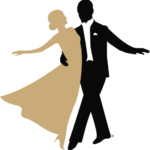How Dance Strengthens Relationships and Builds Deeper Connections
✨ Introduction: The Language of Connection
Relationships are built on trust, communication, and shared experiences—and nothing embodies these qualities quite like dancing. Whether it’s the gentle sway of a waltz, the fiery rhythm of salsa, or the playful bounce of swing, dance is a universal language that brings people closer, both emotionally and physically.
In a world dominated by digital interaction, many couples, friends, and even families are turning to dance to reignite intimacy, enhance communication, and cultivate presence. In this article, we explore exactly how dance strengthens relationships and builds deeper connections, drawing on both psychological insights and real-world experiences.
1. Dance Builds Trust and Nonverbal Communication
One of the most profound aspects of partner dancing is the reliance on nonverbal cues. In every step, spin, and pause, dancers learn to:
Read subtle shifts in body weight and rhythm
Respond intuitively to a partner’s energy
Communicate without speaking
This silent dialogue fosters deep trust. Dancers must let go of control and listen with their bodies, making space for vulnerability and mutual responsiveness. These same skills are essential in any strong relationship—learning to understand your partner without words, to be present and to support one another’s rhythm.
When couples or friends dance together, they often report feeling more in sync, both during the dance and long after it ends. It’s a physical rehearsal for emotional attunement.
2. Shared Movement Enhances Emotional Bonding
One of the key ways dance fosters connection is through synchronized movement. Research in neuroscience has shown that moving in sync with another person increases feelings of closeness, empathy, and trust.
This is because shared rhythm releases oxytocin, the hormone often associated with bonding and affection. It’s the same hormone released during hugs or deep conversation—and dancing delivers it with every beat.
Additionally, dancing:
Lowers cortisol (stress hormone)
Boosts endorphins (feel-good chemicals)
Encourages eye contact, touch, and playfulness
Together, these elements create a shared emotional high that can strengthen relationships and rekindle affection—especially in couples who feel disconnected or stuck in routine.
3. Dance Encourages Play, Laughter, and Joy
Long-term relationships often lose a sense of spontaneity and play. Dance reintroduces joy in its purest form—moving together for no reason other than to feel good and have fun.
Dancing encourages:
Letting go of perfectionism
Laughing at mistakes together
Exploring new music, styles, and steps as a team
These moments of shared joy become powerful emotional anchors. They help partners associate their time together with fun, rather than only responsibilities or routine. In this way, dance becomes a relationship tool—keeping the spark alive through laughter and levity.
4. Dance Improves Conflict Resolution and Patience
It may come as a surprise, but learning to dance with someone can also reveal and strengthen how you handle frustration, mistakes, and growth together. Dancing requires patience, practice, and mutual encouragement.
In every lesson or dance:
One partner leads and the other follows—requiring balance and mutual respect
Missteps happen, and you learn to adjust without blame
You work as a team toward a shared rhythm and goal
This process mirrors healthy conflict resolution in relationships. The ability to stay calm, listen, adapt, and continue moving forward—literally—translates beautifully into life off the dance floor.
This is a key reason why dance strengthens relationships and builds deeper connections: it provides a structured yet playful space to practice empathy, patience, and growth.
5. Dance Creates Sacred Time Together
In busy lives filled with work, errands, and digital noise, quality time can be hard to come by. Dancing offers couples and friends a dedicated window of presence—a time to unplug and be with each other fully.
Many partners report that their weekly dance sessions become a “sacred ritual,” giving them something to look forward to and talk about. It fosters shared goals, like learning a new move or preparing for a fun event, which helps couples feel like they’re growing together.
Over time, this consistent practice of moving in sync builds a kind of relational muscle memory—making it easier to stay connected, even outside the dance studio.
🎯 Conclusion: Movement as a Bridge to Deeper Love
From trust-building and emotional bonding to playfulness and teamwork, there’s no denying how dance strengthens relationships and builds deeper connections. It’s not just about choreography—it’s about communication, vulnerability, and joy.
Whether you’re dancing with a partner, a friend, or even a family member, you’re creating more than just beautiful movement. You’re building presence, patience, and emotional intimacy—one step at a time.
So next time you feel a disconnect or simply want to deepen a meaningful relationship, consider this: sometimes, the best way to grow closer is to turn on the music and dance.

